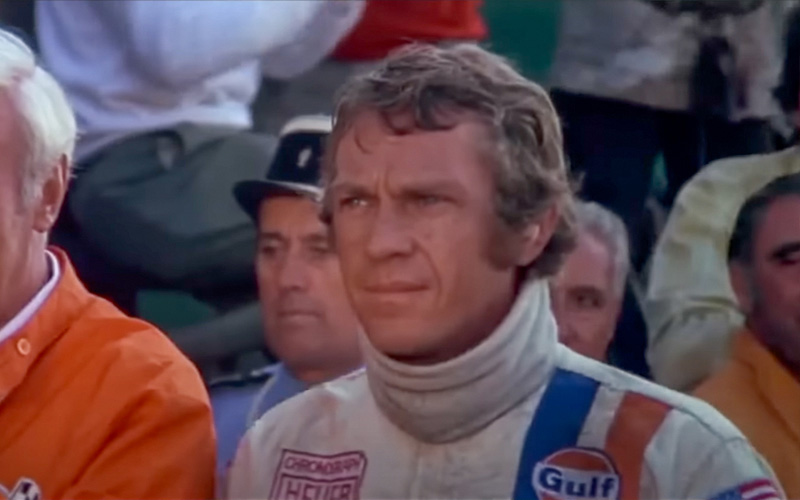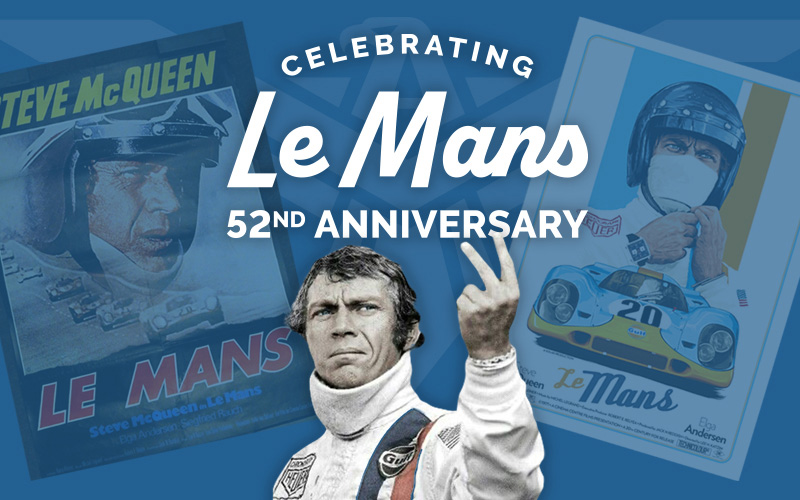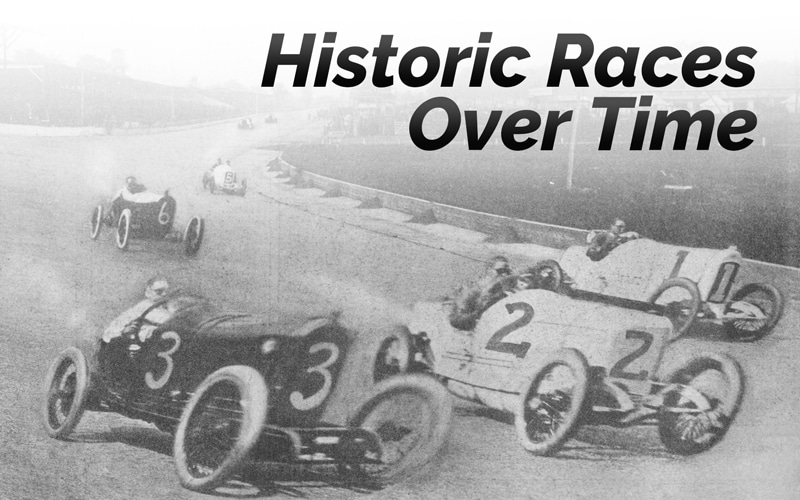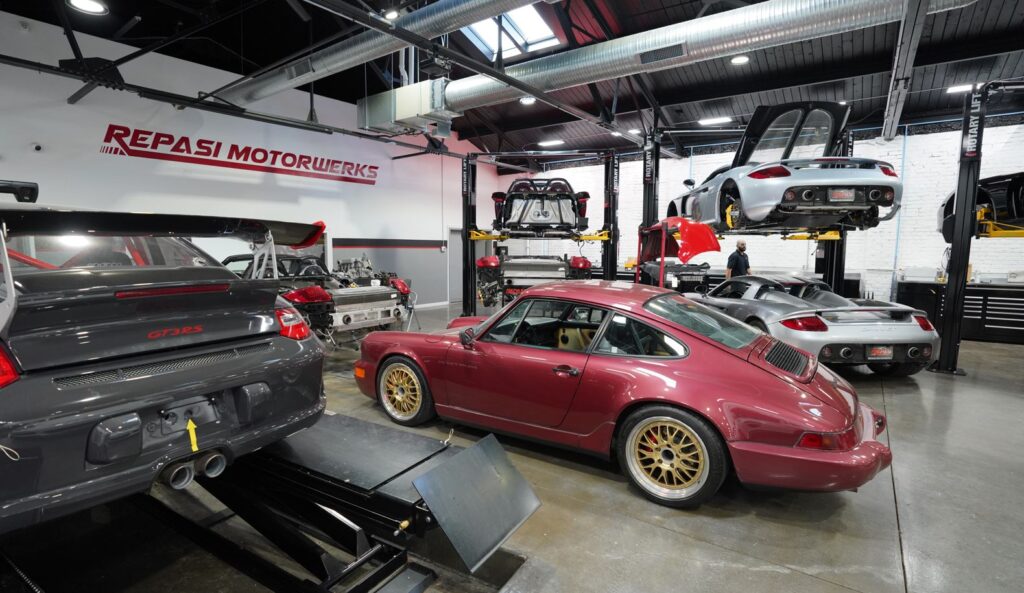Le Mans 1971-Setting a New Standard for Race Films
Over 52 years later, the revving engines, screeching tires, and the heart-pounding thrill of speed that defined the Le Mans movie from 1971 still captures our attention as one of the best car films of all time. Starring the legendary Steve McQueen and directed by Lee H. Katzin, Le Mans takes us on a high-octane journey through the exhilarating world of endurance racing leaving an indelible mark on car culture.

On June 23rd 1971, the Le Mans movie roared into theaters and audiences were immediately captivated by the visceral thrill of the race. The idea of bringing the electrifying world of endurance racing to the silver screen sparked the imagination of filmmakers and motorsport enthusiasts alike. And who better to bring that to life than “King of Cool” himself, Steve McQueen. The combination of McQueen’s magnetic presence, the pulse-pounding sound design, and the jaw-dropping visuals transported viewers into a world where speed, danger, and glory collided. No film had properly captured endurance racing, and McQueen wanted to make “the ultimate racing picture” that would enable the audience to feel and understand what it was like to compete at the highest level. The film’s dedication to realism and its immersive portrayal of racing set a new standard for films and solidified Le Mans as a cultural milestone.

The film was shot on location on the Le Mans circuit between June and November 1970, including during that season’s actual 24 Hours of Le Mans race in mid-June of that year. McQueen attempted to drive in the actual race in a Porsche 917 together with famous race car driver Jackie Stewart, but the #26 entry was not accepted. They chose to depict him instead as starting the race in the blue #20 Gulf-Porsche 917K driven by Jo Siffert and Brian Redman. While Vic Elford and Kurt Ahrens Jr. piloted car #25, the commanding White Porsche 917 “Long-tail.” By seamlessly blending staged scenes with real race footage, the film transported viewers directly into the heart of the action, making them feel like a part of the exhilarating world of endurance racing.
The Race Cars of Le Mans (1971)
Porsche 917

The Porsche 917 was introduced in 1969 and was powered by a Type 912 flat-12 engine which was progressively enlarged from 4.5 to 5.0 litres. This powerful design initially proved unwieldy on the track. Continuous development improved the handling and as well as other improvements led to the 917K (Kurzheck Coupé). The 917K first appeared in 1970 and contributed more to the Porsche 917 story than any other variant. It was developed to exploit the regulations regarding the construction of 5 litre sports cars put in place by the FIA, the governing body of motor sport. It was a high-down force version that featured a cut-off tail for increased downforce. This reduced the cars top speed, as much as 30 mph, but it helped the Porsche win Le Mans two years in a row.
After debuting at the 24 Hours of Daytona, the 917 racing cars run by the JW Automotive and Porsche Salzburg teams would go on to win nine out of the ten races in the 1970 season. It played a pivotal role in Porsche winning the International Championship for Makes in 1970 and 1971 respectively. Porsche went on to develop the 917 for Can-Am racing, culminating in the even more dominant twin-turbocharged 917/30.
Ferrari 512

Facing off against McQueen’s Team Porsche was Team Ferrari, led by Siegfried Rauch as Erich Stahler. Stahler commands attention in the #8 Ferrari 512S Longtail. The Ferrari 512 was designed and build in an impressive three months, meeting the new 5-litre class standards allowing it to take part in the World Sports Car Championship in Group 5. Sporting a mid-mounted 4993.53 cc V12 engine with 4 valves per cylinder, the 512 was able to deliver 550 hp initially with a maximum speed of 211 mph (340 km/h). A special long-tail aerodynamic body was presented at Le Mans, aiming to increase the car’s maximum speed on the long Mulsanne Straight.
Fun Film Fact: The “camera car”, driven by Porsche’s Herbert Linge and Jonathan Williams, traveled 282 laps, or 2,360 miles (3,798 km) and finished the race in ninth position. However, because it had not covered the required minimum distance due to stops to change film reels it ended up not being classified. It even went on to finish second in the P3.0 class.
Bringing The Racing Experience to the Silver Screen
The inclusion of genuine racing footage presented its own set of challenges during production. The crew had to adapt their filming techniques to accommodate the high-speed nature of the races. Cameras were mounted on cars, capturing the thunderous roar of engines and the adrenaline-pumping moments that define the sport. This commitment to realism allowed Le Mans to transcend the boundaries of traditional filmmaking, providing audiences an unparalleled cinematic experience. This new filming approach provided an unprecedented level of authenticity that would leave an indelible mark on the film and its impact on car culture.
Along with gripping drama, the film immerses us in the unforgiving world of endurance racing, where drivers push themselves and their machines to the limit. We witness the physical and mental challenges they face, the exhilaration of high-speed racing, and the strategic maneuvers required to outmaneuver opponents. The film captures the intensity of endurance racing, showcasing the dangers, the adrenaline, and the pursuit of victory.



